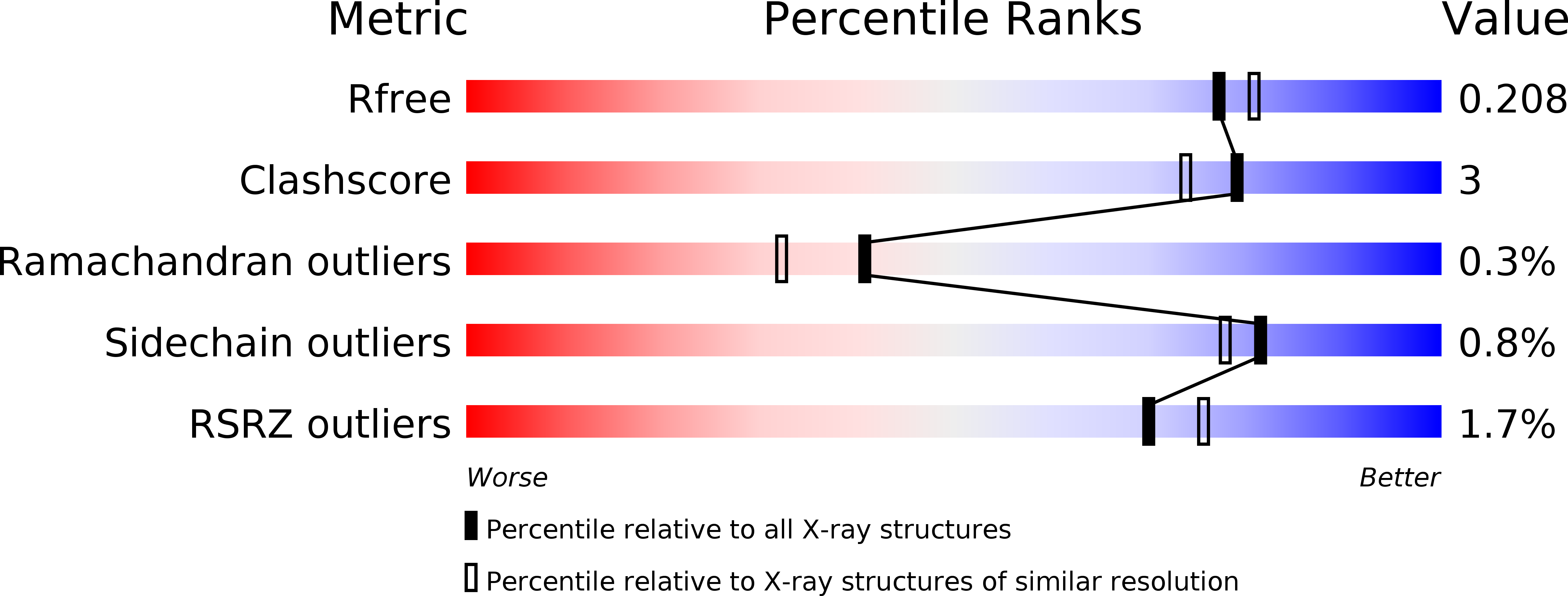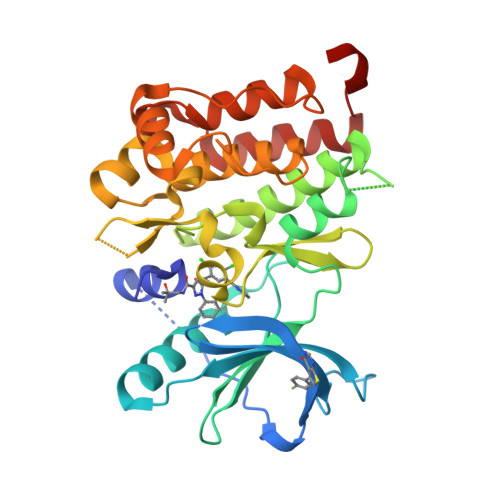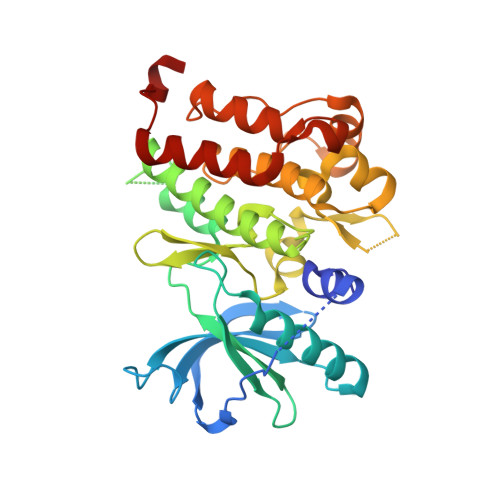Discovery of Allosteric, Potent, Subtype Selective, and Peripherally Restricted TrkA Kinase Inhibitors.
Bagal, S.K., Omoto, K., Blakemore, D.C., Bungay, P.J., Bilsland, J.G., Clarke, P.J., Corbett, M.S., Cronin, C.N., Cui, J.J., Dias, R., Flanagan, N.J., Greasley, S.E., Grimley, R., Johnson, E., Fengas, D., Kitching, L., Kraus, M.L., McAlpine, I., Nagata, A., Waldron, G.J., Warmus, J.S.(2019) J Med Chem 62: 247-265
- PubMed: 29672039
- DOI: https://doi.org/10.1021/acs.jmedchem.8b00280
- Primary Citation of Related Structures:
6D1Y, 6D1Z, 6D20, 6D22 - PubMed Abstract:
Tropomyosin receptor kinases (TrkA, TrkB, TrkC) are activated by hormones of the neurotrophin family: nerve growth factor (NGF), brain derived neurotrophic factor (BDNF), neurotrophin 3 (NT3), and neurotrophin 4 (NT4). Moreover, the NGF antibody tanezumab has provided clinical proof of concept for inhibition of the TrkA kinase pathway in pain leading to significant interest in the development of small molecule inhibitors of TrkA. However, achieving TrkA subtype selectivity over TrkB and TrkC via a Type I and Type II inhibitor binding mode has proven challenging and Type III or Type IV allosteric inhibitors may present a more promising selectivity design approach. Furthermore, TrkA inhibitors with minimal brain availability are required to deliver an appropriate safety profile. Herein, we describe the discovery of a highly potent, subtype selective, peripherally restricted, efficacious, and well-tolerated series of allosteric TrkA inhibitors that culminated in the delivery of candidate quality compound 23.
Organizational Affiliation:
Worldwide Medicinal Chemistry , Pfizer Global R&D U.K. , The Portway Building, Granta Park , Cambridge CB21 6GS , U.K.


















